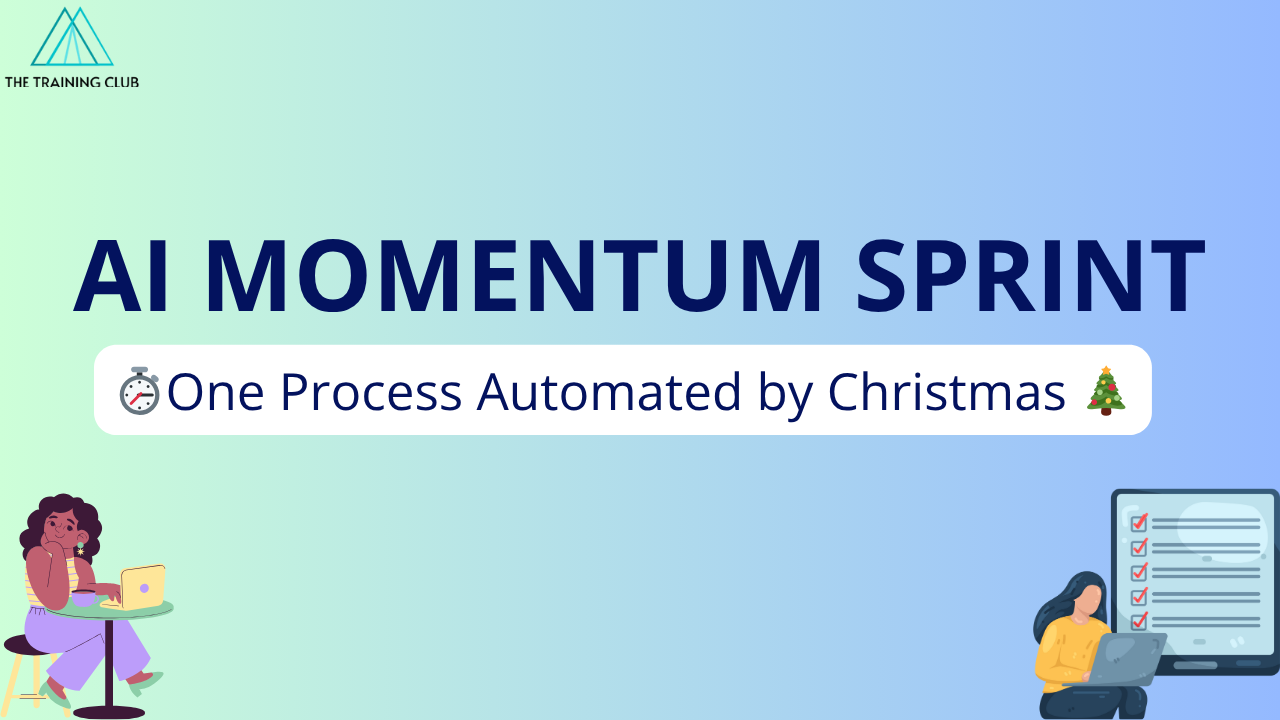
AI in Allied Health: Why Implementation Doesn’t Have to Be Big
Oct 20, 2025By October, most clinicians I speak with are tired.
Admin piles up, reports seem endless and anything that isn’t urgent gets pushed to the “someday” list.
For many, learning how to use AI or implementing it sits squarely in that box.
But implementation doesn’t have to be big.
You don’t need a strategy document or a tech background to get started.
You just need curiosity and one small, low-risk experiment.
The Implementation Myth
When clinicians hear “AI implementation,” they often picture complex software rollouts, new systems or big-budget projects. In reality, most meaningful change in allied health starts much smaller.
Implementation simply means applying what you’ve learned. It’s the point where curiosity turns into action, where ideas become part of how you work.
And that shift can start with something as simple as using an AI tool to generate a draft or testing a template that reduces your typing load.
What Implementation Looks Like in Practice
One clinician I worked with began by using an AI scribe to summarise her clinical notes. She still reviewed and edited every line, but it saved her around 30 minutes a day.
Another tried using ChatGPT to help with phrasing in documentation. It didn’t replace his professional judgment, it just reduced cognitive load when he was tired.
Both walked away saying the same thing:
“I can’t believe how much lighter my week feels.”
The Mindset Shift
Implementing AI successfully isn’t about being an early adopter or automating everything.
It’s about approaching technology with the same mindset we bring to clinical practice: curiosity, reflection and ethical consideration.
You don’t have to get it perfect. You just have to start exploring.
When clinicians take small, thoughtful steps, they build confidence and clarity. And those small steps compound.
How to Start: A Simple Framework
-
Choose one process you repeat often.
Think client letters, reports or scheduling. -
Test a tool in a safe, non-client context.
See how it behaves before using real data. -
Refine it.
Adjust prompts or settings until it saves you real time. -
Document and review.
Check privacy, ethical fit and accuracy. -
Repeat.
Once it works, you’ve implemented your first workflow.
That’s implementation. Not a strategy document, just progress you can feel.
The Payoff: Confidence and Calm
These small wins don’t just save time; they shift the emotional tone of your work.
Less admin, fewer open loops and more energy for clients and creativity.
And as you head into 2026, you’ll already have the foundations of a more sustainable, human-centred practice.
Ready to Try?
If you’ve been curious about AI but haven’t found the time or structure to explore it, the AI Momentum Sprint might be a great next step.
It’s a 6-week program where we focus on implementation, not theory; helping you identify one workflow, streamline or automate it safely, and leave with something working by Christmas. Starts 6 Nov 2025.
Get the AI in Allied Health Newsletter
A free monthly round up of what's happening in AI, tips, research and more, straight to your inbox!
Unsubscribe at any time.
